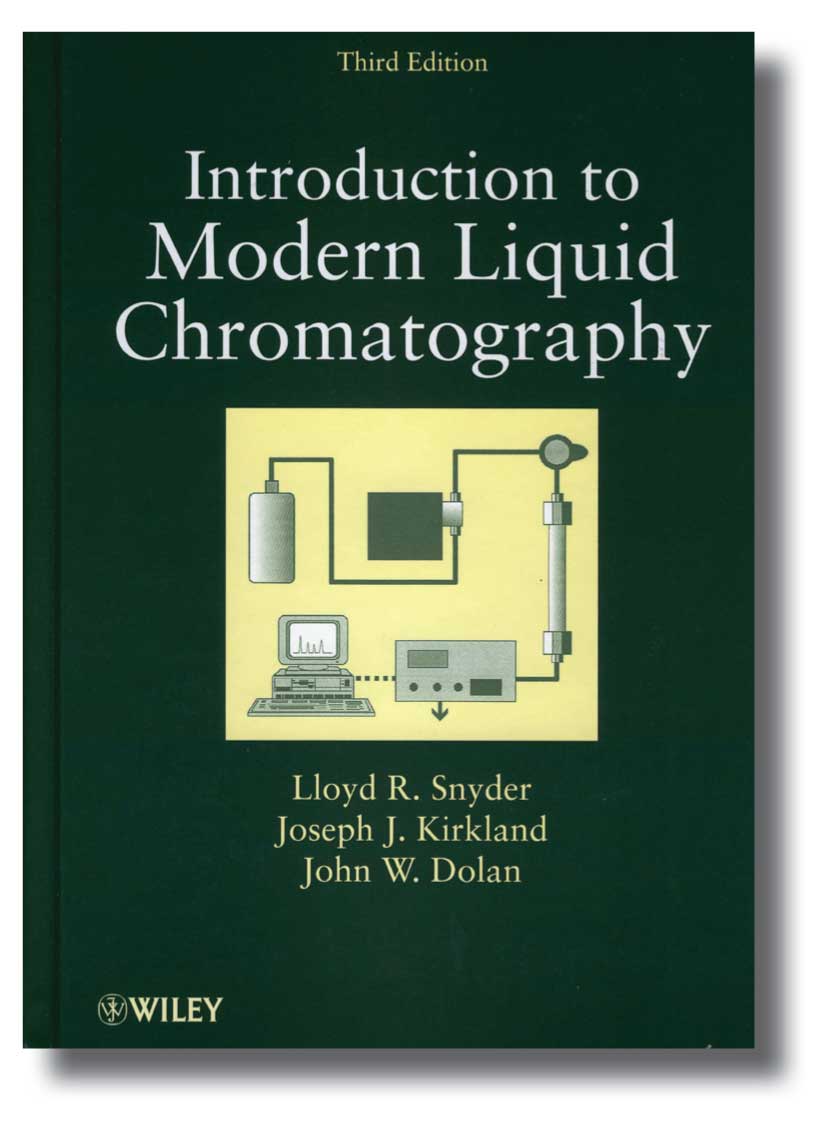My first “real” job was working for Technicon Instruments Corp. in Tarrytown, New York, USA. My boss was Lloyd Snyder, who was to become a close friend and who has been my business partner for almost 26 years. Little did I know what my future had in store when he gave me an assignment of reviewing the draft of 'Introduction to Modern Liquid Chromatography', which he and Jack Kirkland had written for the 2nd edition (published in 1979). Without a doubt I learned more about chromatography while reviewing that book for typos than I have from any book before or since. When I say that the cover is falling off of my copy, I really mean it – there is a tear down the cloth of the spine from being pulled off the shelf so many times. It still has the original dust jacket, but it has been taped so many times there is more tape than jacket in most places. It still sits proudly on my bookshelf next to its older brother, the 1st edition, published in 1974.
So you can imagine that I felt honoured when Lloyd and Jack invited me to participate in the preparation of the 3rd edition. I’d like to share a bit about this book with you, not because I’m one of the authors and would like to get additional royalties, but because I truly believe that this is the very best book on HPLC that you can buy today. If you think I’m a bit biased, check out Bruce Hamilton’s review of the book on Chromatography Forum (http://www.chromforum.org/viewtopic.php?t=11942&highlight=) for a more neutral evaluation.

We started over, from the ground up. The general organization is the same, as is the title, but everything is new and up-to-date. One thing I think you’ll find in the 912 pages is that there is something for everyone. If you’re just starting out and want to know what HPLC is all about and how it fits into the world of analytical chemistry, there’s some good background in Chapter 1, plus simple explanations of processes and equipment scattered throughout the book. If you are a grizzled veteran like me, there are all the equations and derivations that you could want. And everything in between. After a chapter on the chromatographic process, in as little or much detail as you like, a couple of chapters look at the equipment of HPLC, including a general look at the column. Then off we go on separation techniques. Reversed-phase is the most popular separation mode, so it justifiably get’s the lion’s share, but normal phase, chiral, polymers, HILIC, and other techniques are included with input from experts in the field. We’ve pulled in other experts, including Mike Swartz on validation, Geoff Cox on preparative separations, and Ron Majors on sample preparation. And with me involved, there had to be a big chapter on troubleshooting.
I doubt if many people will read this book cover-to-cover, like I did for the 2nd edition, but we designed it mainly for reference use. We feel the index is comprehensive. The table of contents gives 3 levels of detail for each chapter so that you can find what you need without flipping too many pages. And like the 10 pages of safety instructions in your 12-page television manual, we scatter warnings throughout the pages: “If you get nauseated by equations, skip this section and resume at Section x.x.”
Where can you get one? This is a Wiley book (ISBN 978-0-470-16754-0), but I’d go to Amazon (http://www.amazon.com/Introduction-Modern-Liquid-Chromatography-Snyder/dp/0470167548/ref=sr_1_1?ie=UTF8&s=books&qid=1266592643&sr=8-1) where I see it listed for $100 – and you can get it shipped from your local Amazon warehouse instead of the USA if you live in another part of the world.




